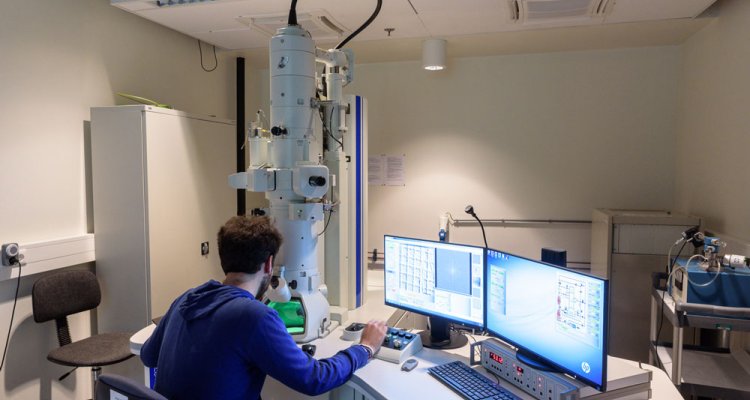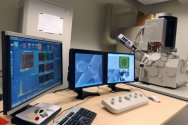
Equipment
High resolution (cryo-)TEM
Transmission Electron Microscopy has many applications across a multitude of industry sectors. It allows 2D and 3D-imaging of the internal structure of a wide range of samples, providing morphologic and crystallographic information. It thereby enables the analysis of structure and texture at micrometer and nanometer scale. The cryo-setup enables to image wet samples with this technology. As a result, the TEM platform of Wageningen University & Research, Shared Research Facilities is a powerful and flexible tool for studying a very broad range of materials and products.
The JEOL JEM-1400Plus Transmission Electron Microscope offers ultimate in 120kV performance for a wide range of applications. The JEM-1400Plus features high resolution/high contrast imaging, outstanding TEM analytical performance. This system is extremely user-friendly as it has a wide range of automated functions including Auto Focus, Auto Exposure, and Auto Montage.
Technical details
JEOL 1400Plus Transmission electron microscope
- Versatile TEM for a wide range of applications
- JEOL CCD camera Ruby (8 M pixel)
- Software: SightX Viewer (JEOL) // Serial EM // Shotmeister
- High Voltage: 80 kV, 120 kV
- Emitter: LaB6 crystal
- Tomography
- Minimum magnification of 10x allows for full coverage of a specimen grid
Holders
- Specimen quick change single tilt holder (Tilt-α ± 20°)
- 4-position multi-specimen holder
- High tilt specimen holder (Tilt from + to - 70°)
- GATAN liquid nitrogen cooled cryo-holder
Applications
Transmission Electron Microscopy can be used in wide range of research fields from biological to material research, life sciences, food technology, nanotechnology, medical sciences, forensic analysis.
The sample investigated can be:
1. An ultrathin section of material (50-70nm). For example
- from biological samples (to investigated ultrastructure of the cells and tissues, immunolocalisation)
- food samples (looking at membrane structure, lipids)
- microparticles (shell thickness, drug delivery)
2. a suspension of the material. For materials that have dimensions small enought to be partly elecytron transparant such as:
- powdered substances
- virus particles
- small organisms (e.g. bacteria)
- nanoparticles
- crystals
